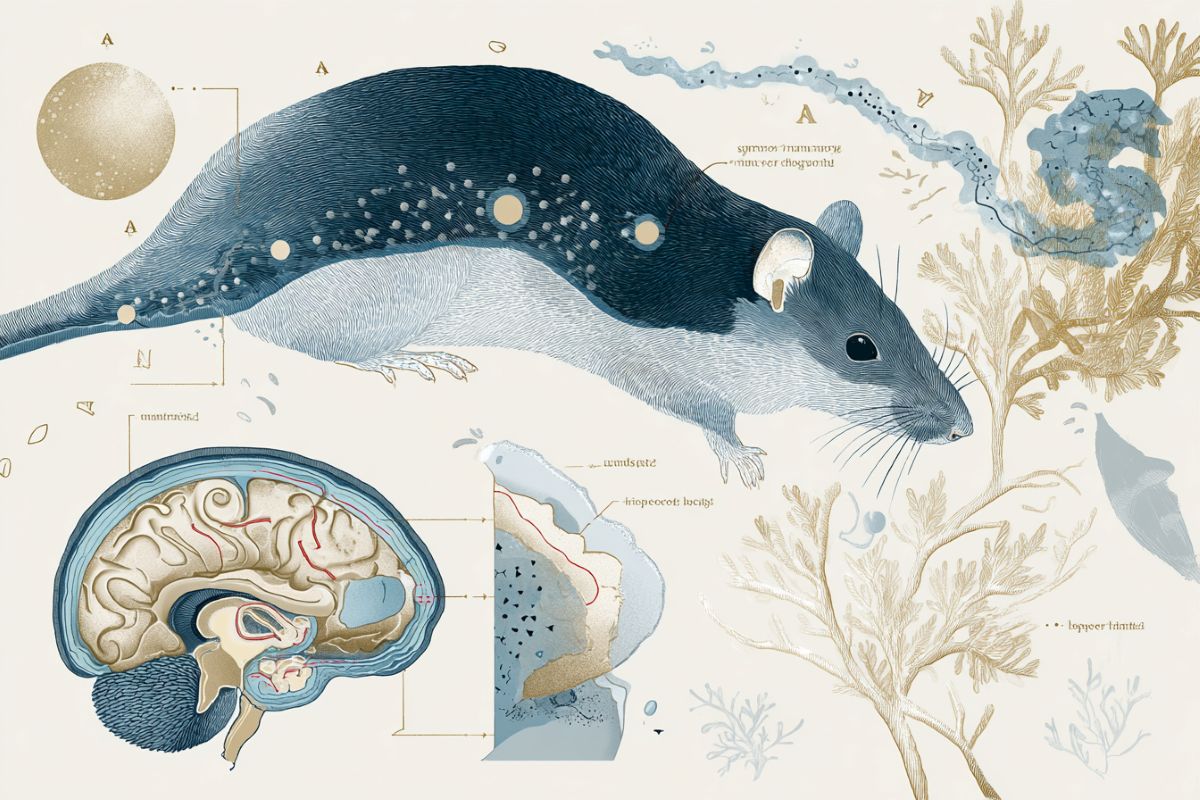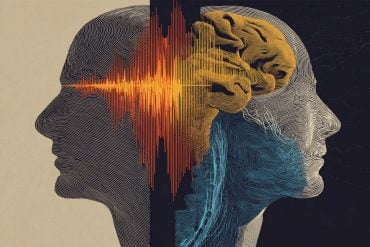Summary: Scientists used non-invasive MRI to study shrews that seasonally shrink and regrow their brains, uncovering water loss as the key driver of this rare phenomenon. Despite losing about nine percent of their brain volume in winter, shrew brain cells remain alive, with aquaporin-4 proteins playing a key role in regulating water movement.
This discovery parallels mechanisms seen in human brain diseases, where brain volume loss typically leads to irreversible damage. Researchers hope studying how shrews regrow their brains could inspire novel approaches to treating neurodegenerative disorders.
Key Facts:
- Brain Shrinkage: Shrews lose about 9% of brain volume in winter without cell death.
- Water Balance: Aquaporin-4 proteins move water out of cells, preventing damage.
- Human Link: Mechanisms resemble Alzheimer’s and Parkinson’s, offering potential medical insights.
Source: Max Planck Institute
Common shrews are one of only a handful of mammals known to flexibly shrink and regrow their brains. This rare seasonal cycle, known as Dehnel’s phenomenon, has puzzled scientists for decades.
How can a brain lose volume and regrow months later without sustaining permanent damage?
A study using non-invasive MRI has scanned the brains of shrews undergoing shrinkage, identifying a key molecule involved in the phenomenon: water.
“Our shrews lost nine percent of their brains during shrinkage, but the cells did not die,” says first author Dr. Cecilia Baldoni, a postdoctoral researcher from the Max Planck Institute of Animal Behavior in Germany. “The cells lost water.”
Normally, brain cells that lose water become damaged and ultimately die, but in shrews, the opposite happened.
“The cells remained alive and even increased in number,” says Baldoni.
This finding solves a mystery—and opens up potential pathways for the treatment of human brain disease.
“We see that brain shrinkage in shrews matches closely what happens in patients suffering from Alzheimer’s, Parkinson’s, and other brain diseases,” says Associate Prof. John Nieland, an expert in human brain disease at Aalborg University, Denmark.
The study also shows that a specific protein known for regulating water—aquaporin 4—was likely involved in moving water out of the brain cells of shrews. “We see this same protein present in higher quantities in the diseased brains of humans, too,” says Nieland.
That the shrunken brains of shrews share characteristics with diseased human brains makes the case that these miniature mammals, with their ability to reverse brain loss, could also offer clues for medical treatments.
“The next step is to learn how shrews regrow their brains so that we might find ways to teach human brains to do the same,” Nieland adds.
Peering inside a shrinking brain
Dehnel’s phenomenon, or reversible brain shrinkage, is rare among animals. Up until now, it is known only in European moles, stoats and weasels, and some species of shrews. Among these, common shrews are the most studied. When undergoing Dehnel’s, their brains become smaller from summer to late winter, then regrow in spring.
Scientists call this reversible resizing “brain plasticity,” and it is thought to help shrews conserve energy when food is scarce.
“These tiny mammals, which are no bigger than your thumb, have to eat every few hours, whether it’s in summer when there’s lots to eat or in winter when there’s very little,” says Dina Dechmann, a group leader at the Max Planck Institute of Animal Behavior who has studied Dehnel’s phenomenon for over 13 years.
The researchers used high-resolution MRI to scan the brains of wild common shrews caught in Germany in summer and then recaptured in winter. The medical imaging technique allowed the scientists to non-invasively see inside the brains of living animals over seasons.
“In this way, we could track how the brains of individuals changed as they experienced shrinkage from summer to winter,” says senior author Prof. Dominik von Elverfeldt from the Faculty of Medicine at the University of Freiburg, Germany, who led the imaging.
They also compared these scans to microscopic examination of brain tissue in summer and winter to determine the number of cells at each stage.
How shrews pull off Dehnel’s
Overall, the brains of shrews in the study lost around nine percent volume in winter, which the team observed to be due to the movement of water out of brain cells. But when the team zoomed in on different brain regions, they noticed that not all areas shrank equally.
This uneven effect could explain Dehnel’s phenomenon’s great ecological paradox: how do animals survive with smaller brains?
“Shrews still need to find food, escape predators, and go about their daily lives all winter, which they manage to do with a smaller brain,” says Baldoni.
By human standards, says Nieland, “it’s astonishing what these shrews accomplish with brain loss of almost ten percent. We commonly see Alzheimer’s patients suffering from the same percentage brain reduction, and the loss of function in these patients is tremendous.”
The study’s neuroimaging results point to a potential answer. Most brain regions shrank in winter and exhibited consistent shifts in water balance characterized by less water inside the cells and more water surrounding them. However, the neocortex and cerebellum deviated from this general pattern, keeping a more stable balance of water inside and outside their cells.
“These regions are responsible for cognitive skills such as memory as well as motor control,” says Baldoni.
“The shrews seem to be adjusting their brains for winter like we might adjust heating in a house, keeping the essential rooms heated while dropping power in areas where we can afford to reduce operations.”
For the ecologists, the study explains the mechanism behind a rare seasonal strategy and raises new questions.
“Now that we understand the physiology better, we are keen to link this to the behavioral consequences of Dehnel’s phenomenon,” says Baldoni.
“How does having a smaller brain affect behavior? Can shrews solve the same navigational and coordination challenges in winter as they can in summer?”
Potential path to medical treatment?
For the neurologists, the story of what shrews can offer human medicine has just begun. Many brain diseases—Multiple Sclerosis, Parkinson’s disease, Amyotrophic Lateral Sclerosis (ALS), and Alzheimer’s disease—involve brain volume decline due to water loss. But for humans, this loss progresses in only one direction.
“So far, there is no treatment for any brain disease that can prevent or reverse this loss of brain volume,” says Nieland.
“We have now discovered, in shrews, an animal that is getting human-like symptoms of brain disease, but has biological tools not only to stop this process, but to reverse it too.”
The next step for the team is to study the second phase of Dehnel’s—the brain’s regrowth from winter to summer. By doing so, they hope to unlock clues for treating brain diseases.
Adds Nieland: “The idea that we might have a model animal that can help us learn how to treat diseases that are currently incurable is the most exciting thing I can think of.”
About this neuroscience and neuroplasticity research news
Author: Carla Avolio
Source: Max Planck Institute
Contact: Carla Avolio – Max Planck Institute
Image: The image is credited to Neuroscience News
Original Research: Open access.
“Programmed seasonal brain shrinkage in the common shrew via water loss without cell death” by Cecilia Baldoni et al. Current Biology
Abstract
Programmed seasonal brain shrinkage in the common shrew via water loss without cell death
Brain plasticity, the brain’s inherent ability to adapt its structure and function, is crucial for responding to environmental challenges but is usually not linked to a significant change in size.
A striking exception to this is Dehnel’s phenomenon, where seasonal reversible brain-size reduction occurs in some small mammals to decrease metabolic demands during resource-scarce winter months.
Despite these volumetric changes being well documented, the specific microstructural alterations that facilitate this adaptation remain poorly understood.
Our study employed diffusion microstructure imaging (DMI) to explore these changes in common shrews, revealing significant alterations in water diffusion properties such as increased mean diffusivity and decreased fractional anisotropy, leading to decreased water content inside brain cells during winter.
These findings confirm that brain-size reduction correlates with a decrease in cell size, as our data indicate no reduction in cell numbers, showcasing a reorganization of brain tissue that supports survival without compromising brain function.
These findings extend our understanding of neuronal resilience and may inform future research on regenerative mechanisms, particularly during the spring regrowth phase, offering potential strategies relevant to neurodegenerative disease.







